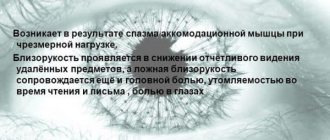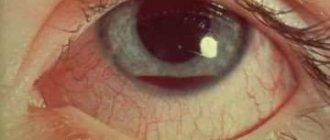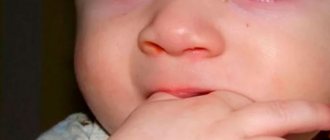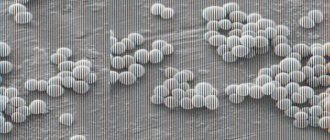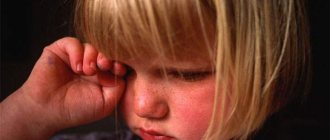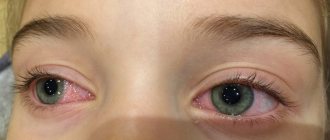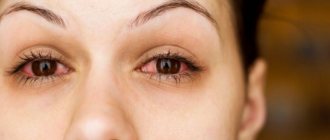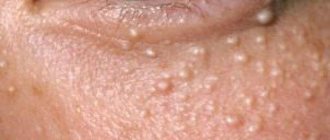Barley is an acute inflammatory disease of the eye that can appear in a person of any age. The most vulnerable are preschool children and adolescents.
In young children, the mucous membranes and glands of the eyes are not well protected, so they can often be exposed to a variety of environmental influences. Dirt, low air temperature and colds are no exception.
Young patients are not yet fully able to control their actions and therefore they very often reach into their eyes to rub them. This can lead to a disease such as stye in a child’s eye.
Treatment should begin immediately after the first symptoms appear. It will take a lot of time and patience, both from parents and from the child.
Stye can be on the upper or lower eyelids, both outside and inside. External inflammatory processes are better treated.
Read more information about stye on a child’s eye on this website.
Symptoms of stye on the eye
Before you begin to treat barley on a child’s eye, you need to be absolutely sure of this diagnosis. Of course, it is better to visit a pediatric ophthalmologist to determine the disease.
But, if this is not possible, then the most basic symptoms of eye disease are:
- Itching and burning. This can be understood when the baby constantly crawls into his eyes and scratches them;
- Edema. It may not appear immediately, but after a few hours or one day. The swelling is more noticeable on the upper eyelid than on the lower eyelid;
- Tearfulness of the sore eye. You need to watch this closely. It is worth paying attention if the eye waters continuously;
- Moodiness, loss of appetite, disturbed sleep of the child. Barley, which causes terrible discomfort, brings big trouble to an adult, a small person;
- Redness of the eyelid and conjunctiva . To check the symptom, you need to thoroughly wash your hands;
- Swelling. The symptom appears at the site where the abscess appears. After 4-5 (±1-3) days, the abscess opens and it is necessary to ensure that the child does not touch the eye during this time. If the barley did not open, but disappeared, it means that it resolved on its own;
If the stye does not open and does not disappear for a long time, you should consult a doctor, because This is already a cold stye (chalazion).
You should not hesitate to visit an ophthalmologist if you have the following symptoms:
- inflammation began in the baby;
- swelling prevents the child from seeing;
- increased body temperature;
- discharge of pus.
If you postpone visiting a specialist until the last minute, complications may arise, leading to very long and complex treatment, with irreversible consequences.
Prevention
To prevent the formation of barley in a child, the following rules must be followed:
- teach the child to wash his hands, not touch his eyes, not wash his face in the morning and evening, and not use other people’s personal hygiene items;
- harden the child with the help of a swimming pool, walking barefoot, walking in the fresh air;
- when chronic diseases appear, periodically use physiotherapy;
- if an infectious process occurs, start treatment in time, since diseases of the ear, nose, and throat can lead to the spread of bacteria to the eye area;
- complete nutrition, including vitamins, mineral complexes and nutrients.
Barley is an infectious and inflammatory disease that can be easily treated if you consult a doctor in a timely manner. Self-medication should not be carried out, as complications may occur. You should strictly follow the doctor's instructions to prevent microorganisms from becoming resistant to the drug. To prevent the disease, it is important to know what internal stye looks like in front of a child and what to do with it.
Author's rating
Author of the article
Alexandrova O.M.
Articles written
2031
about the author
Was the article helpful?
Rate the material on a five-point scale!
If you have any questions or want to share your opinion or experience, write a comment below.
Causes of barley
A stye can appear on a child’s eyelid at any moment, which means that an inflammatory process has begun and a bacterial infection has become active. In frequent cases, this occurs due to the fault of Staphylococcus aureus.
A microbe appears for the following reasons:
- children do not always wash their hands after going outside or going to the toilet and may rub their eyes;
- severe hypothermia of the body;
- immune system failure and weakening;
- entry of a foreign body into the eyes (eyelash, dust, speck, etc.);
- Once wet feet can cause stye;
- getting into the eyes of wind, smoke, gas, air spoiled by chemicals;
- diabetes;
- heredity;
- anemia;
- poor quality contact lenses;
- improper or monotonous diet, poor appetite;
- some chronic diseases (for example, gastrointestinal tract);
- the use of certain medications (antibiotics, etc.);
- infrequent exposure to fresh air;
- lack of sleep, fatigue, stress, mental and physical stress;
- lack of vitamins in the body;
If a child has a stye on his eye, it is necessary to find out the reason for its appearance. Knowing it, you can avoid this inconvenient, unpleasant, serious disease next time.
Symptoms of barley in infants
If the baby has caught a cold, has a weakened immune system, or has suffered an infectious disease, the negative symptoms of barley will manifest themselves on the eyelid. Speaking about characteristic symptoms, these are:
- the formation of swelling on the eyelid and its redness, especially at the site of the future abscess;
- burning sensation and swelling, to the point that the newborn cannot open his eyes;
- the baby becomes irritable and restless, constantly scratching his eyes;
- after 2-3 days, the swelling on the eyelid develops into an abscess - its focus has a white top or is covered with a crust, and when it matures and reaches a certain size, spontaneous opening and leakage of pus may occur;
In addition, the inflammatory process and the maturation of a purulent neoplasm can be accompanied by headaches and twitching of the eyelid, and a slight increase in body temperature.
How to treat stye in a child?
If barley does appear, then its treatment should not be delayed.
The sooner you begin to localize it, the less time and nerves it will take until it completely disappears.
Treatment of stye, especially if ulcers appear, should be carried out after consultation with a specialist.
Depending on the type of disease and the age of the child, the doctor will prescribe the necessary medications.
You will also need to take tests, namely:
- General blood analysis;
- General urine analysis;
They will help identify the presence of infection in the body, as well as inflammation.
Many parents self-medicating lead to the disease not only spreading to the second eye, but also acquiring a more dangerous, purulent form.
Adviсe:
- It is necessary to monitor the hygiene of the baby’s hands, and use a separate towel to wash him.
- At the initial stage of the disease, dry heat and compresses can be used.
- If the stye is located outside the eyelid, you can cauterize it. The cauterization should be done very carefully so that the product does not get on the mucous membrane of the baby’s eyes.
- In addition, when treating barley, it is imperative to use antibacterial eye drops or ointments.
- If an abscess has nevertheless formed and its head is visible, then dry heat, compresses and cauterization should be stopped. Since this can greatly worsen the child’s condition.
- And in order for the inflammatory process in the form of barley to no longer appear, the small patient should be examined and undergo appropriate treatment.
Drops for the treatment of barley
Any specialist in the field of ophthalmology, and indeed every person who has encountered an unpleasant stye at least once, will say that in its treatment it is necessary to use antibacterial eye drops. This remedy relieves pain, relieves inflammation and prevents the development of purulent processes.
Drops that help in the treatment of stye:
- The most powerful and common antibiotic is Floxal (oflaxacin) . It can be used not only when barley has already developed to its full potential, but also when its first signs appear. Floxal has a strong bactericidal effect, which reduces the impact of infections. Floxal drops should be instilled into the conjunctival sac of the affected eye, 1 drop 2-4 times a day. On the 2nd day after use, a decrease in inflammation is noted. It is not recommended to use the drops for more than 2 weeks.
- The next equally effective eye drug is Levomycetin. It has a comprehensive effect on the focus of the inflammatory process, thereby easing the disease process and accelerating recovery. Levomycetin disinfects, prevents further development of the disease, helps barley ripen, relieves pain, and reduces the duration of the disease. The components of the drops do not have a harmful effect on the eyes. The drug must be instilled into the conjunctival sac of both eyes, 1 drop 3-4 times a day. The duration of treatment is prescribed by the doctor.
- Tobrex (tobramycin) is a mild but effective drug against the treatment of stye in a child. By penetrating bacterial cells and thereby blocking protein synthesis, it prevents the proliferation of infectious bacteria and subsequently causes their death. The drug is so mild and harmless that it can be used by newborn children. It is instilled 1-2 drops into the conjunctival sac in both eyes every 4 hours.
- To treat stye on a child’s eye, you can also use Albucid (sodium sulfacyl) eye drops 20%. They are an antibiotic that can treat any eye inflammation. These drops can be used even by newborns. Albucid 20% should be instilled 5-6 times a day into the lower conjunctival sac, 2-3 drops.
- Gentamicin is the most powerful drug of all of the above. It is allowed to be used by children over 12 years of age. It is instilled into the conjunctival sac, 1-2 drops 4-6 times a day. Typically, the course of treatment should not exceed 2 weeks.
- Maxitrol eye drops are also an antibiotic that has a bactericidal effect, disrupting and blocking the protein synthesis of bacterial cells. Ophthalmologists recommend instilling Maxitrol 4-6 times a day, 1-2 drops in each eye.
Dexa-Gentamicin
Phloxal
Albucid
Maxitrol
Levomycetin
Tobrex
Correct use of eye drops
Recommendations for using eye drops:
- If the drops are cold, then you need to warm them by holding them in your hand for 10-15 minutes. Cold drops can cause colds in the eyes;
- Before the instillation procedure, hands must be thoroughly washed with soap and water. Under no circumstances should you disinfect with alcohol or an alcohol-containing solution;
- The child should have his head thrown back. The best position is sitting or lying down;
- The baby's gaze should be directed upward. This way you can avoid discomfort when the product gets on the pupil;
- After instillation, the child should close his eyes and move his pupils. This is necessary for uniform distribution of the drug;
- In order to use the following remedy, at least half an hour must pass; Do not instill more than 2 drops of the drug into one eye.
Ointments for treatment
In addition to eye drops, it is necessary to place eye ointments under the lower eyelid. Treatment of stye on a child’s eye with ointments in combination with drops gives several times better results than using solutions alone.
List of ointments that will help cure stye on the eye in children:
- The most popular eye ointment against stye is tetracycline. It is well tolerated by both adults and children over 5 years old. A small amount of this product is placed behind the lower eyelid at night. The duration of treatment is determined by the doctor, but usually it does not exceed 5 days. This time is just enough for the barley to open. In some cases, Tetracycline ointment is used during the day. The number of such procedures can reach 5. This ointment copes well with infection, due to the content of antibiotics in its composition, which, when used externally, do not cause harm to health, even with frequent use.
- An analogue of the previous remedy is Erythromycin ointment. It should also be used by placing it under the lower eyelid at night. This drug can be used to treat newborns.
- Hydrocortisone ointment copes well with eye diseases. But it cannot be used for more than 7 days.
Erythromycin
Tetracycline
Hydrocortisone
Correct use of eye ointments
Rules for using eye ointments:
- Before applying the ointment, you must wash your hands well with soap. Do not wipe them with alcohol or solutions containing alcohol;
- A strip of ointment should be squeezed onto the index finger. This way it will warm up a little and will not be felt in the eye;
- Gently move the lower eyelid and put the ointment into the conjunctival sac;
- The child should close his eyes and wait until the ointment is distributed;
- Since ointments often make vision cloudy, it is better to apply them at night.
How to treat correctly and possible complications
Treatment at home is possible only in the case of a single abscess, as well as the initial stage of the disease. You can stop the ripening of hordeolum with the help of:
Cauterization of the inflamed area using an alcohol solution or brilliant green. To do this, soak a cotton swab in the solution and gently apply it to the inflamed area.
It is important to ensure that the liquid does not get into the eye, as this can cause a burn! A compress of dry heat, which can be used as sea salt, flax seeds and other bulk substances heated and wrapped in a cloth. This technique can be used only until the purulent head appears! If the pus is already noticeable, then heating will only cause harm!
Rinsing with a decoction of chamomile, calendula or other herbs that have an anti-inflammatory effect will also help alleviate the condition.
Unfortunately, most often such gentle therapy does not bring the desired results, and the stye begins to grow and cause discomfort. Therefore, instead of washing, cauterizing and warming, it is better to use proven and effective medicinal drugs.
For the treatment of hordeolum in children, it is recommended to use the following drops:
- Floxal is a powerful antibiotic that can be used at all stages of the disease. It has a bactericidal effect, which allows you to quickly stop the pathological process.
- Levomycetin is an excellent disinfectant, analgesic and antibacterial agent that will help get rid of barley in the shortest possible time.
- Tobrex or tobramycin is a mild ophthalmic agent that, after instillation, penetrates bacterial cells and inhibits protein synthesis, which causes their death. It has no harmful effects and therefore can be used even for infants.
In addition to drops, you can use effective ointments that need to be placed behind the sore eyelid. The most popular is tetracycline ointment, which allows you to cope with inflammation in record time. Erythromycin and hydrocortisone ointments are also considered effective. It is recommended to apply ointments at night, and the duration of their use should not exceed five days.
During the ripening of barley, you should never squeeze it out yourself, as this can lead to infection of other sebaceous glands. You need to wait for it to break through, and then remove the leaking pus using any antiseptic solution or chamomile decoction.
With an advanced inflammatory process, accompanied by a lack of adequate treatment, hordeolum can cause the following complications:
- Abscesses, localized over the entire surface of the eyelid, occur when the infection spreads to nearby glands and tissues. This situation is observed after attempts to independently open the abscess even before it matures.
- Chalazion, which is a chronic form of hordeolum. Treatment in most cases is exclusively surgical.
- Meibomitis is a purulent inflammation of the gland of the cartilage of the eyelid.
- Cellulitis is an inflammation of the eyeball that, if left untreated, causes damage to the optic nerve and blindness.
To prevent the occurrence of dangerous conditions, it is not recommended to use exclusively traditional methods of treating barley. The optimal solution would be to combine them with effective and harmless ophthalmic drops or ointments. In case of frequent appearances of hordeolum, it is better to go to the clinic to get tested and receive full treatment.
Treatment of barley in children at home
As soon as the first symptoms of the ill-fated barley appear, it is necessary to take action immediately. It would be good to immediately contact an ophthalmologist. And if there are no deteriorations such as high fever or a large number of styes, then the doctor will prescribe home treatment.
If it is still not possible to see a doctor on the same day, then you need to do the following:
- Soak a cotton swab in 70% alcohol, brilliant green or iodine and cauterize the inflammation;
- Apply dry heat to the sore eye. It can be a boiled chicken egg, a warm tea bag, sea salt, preheated in a frying pan and wrapped in a cloth bag. Such procedures will help relieve pain and improve outflow in the sebaceous gland;
- Place the drops listed above into the eyes;
- At night, put ointment under the lower eyelid. If the child does not allow this, you can wait until he falls asleep and spread the ointment along the eyelashes;
- When the stye is opened, pus is released, which can stick together the baby’s eyelashes. To remove pus, you need to moisten a cotton swab in furatsilin solution, tea leaves or boiled water and rub it over the eye;
- It’s good to make sure that the baby doesn’t put his hands in his eyes or rub them. This may spread the infection to other areas of the eye;
- After opening, you need to wash the eye with herbal decoctions (chamomile, calendula) for 1-2 days. This will promote rapid healing of the wound and also protect the eye from recurrent infection.
Folk recipes
You can resort to folk recipes, but you should not give them complete preference:
- For eyelid lotions, you can use an infusion of calendula or chamomile. To do this, pour 1 tablespoon of dry herb into 200 ml of boiling water. Let it brew for about half an hour. Cool slightly and apply to the eyelid.
- Aloe juice lotion has a good bactericidal and anti-inflammatory effect. For preparation you will need 1 part squeezed aloe juice and 10 parts boiled water. The lotion should be applied 3 times a day.
- A simple decoction, accessible to everyone, can be made from birch leaves. To prepare it, you need 1-2 tablespoons of dry crushed birch leaves, pour 200 ml of boiling water, let it brew for half an hour. Rinse the baby's sore eye with warm broth 3 times a day.
Treatment of barley
Diagnosis usually involves examining the child by a doctor. For an experienced specialist, this will be enough to immediately make an accurate diagnosis; no special tests are required. He will recommend how to cope with the problem with medication and whether it is possible to use folk remedies.
The main remedies for stye on the eye are drops and ointments. Some recommend using lotions and compresses.
Stye eye drops are used three times a day. All procedures must be carried out under sterile conditions with clean hands in a supine position. To get rid of inflammation in a child’s eye, you can use the following medications:
- "Ophthalmoferon" - approved for use from the first days of a baby's life;
- “Albucid” is an effective medicine, but causes a strong burning sensation when instilled;
- “Levomycetin drops” are an effective remedy that irritates the mucous membrane less, but also causes discomfort;
- "Tobrex" - used for frequent barley, the drops do not cause pain and the baby reacts calmly.
Drops are used in almost all cases when stye is on the upper or lower eyelid.
Doctors often prescribe ointments. In most cases, such drugs do not provoke the development of adverse sensations, and children tolerate such treatment well. It should not be applied under the eyes. The product is placed directly under the lower eyelid.
The following ointments are used:
- "Levomycetin";
- "Tetracycline";
- "Tobrex";
- "Erythromycin".
Ointments with such a base perfectly eliminate the very cause of barley and protect against the consequences.
Among the popular methods used:
- washing with furacillin solution;
- chamomile decoction compresses;
- applying dry heat;
- consumption of brewer's yeast.
The attending physician will issue a prescription for the necessary medications and tell you which traditional recipes will be effective in a particular case.
What absolutely cannot be done?
Often, when treating barley in children, many parents use unacceptable actions, which in the future only aggravate the whole situation.
Under no circumstances should you do the following:
- Squeeze out the abscess. This attempt can lead to the pus coming out not outside, but inside the eyelid, thereby spreading the infection;
- Warm the abscess. Heat can only be used at a certain point in the development of barley. In other cases, warming up is fraught with complications;
- If the inflammatory process begins on the inside of the eyelid, then under no circumstances should it be cauterized . This can lead to burns of the mucous membrane;
- “Spitting” in the eye and rinsing it with urine is strictly prohibited. This will lead to additional infections and irreversible consequences. And if earlier people spat in the eye and showed figs, then it was simple luck;
- Cover barley with cosmetics;
- Do not let the disease take its course;
- Do not interrupt the course of treatment. If you forget to take this or that drug even for one day, infectious bacteria can develop resistance to the drug.
If you do not commit the above rash actions, you can avoid severe and irreversible consequences.
What not to do with barley
Neglect of hygiene rules or incorrect actions can lead to complications of stye.
If you have barley, you should not:
- Squeeze out the abscess.
The procedure for cleansing barley from pus can only be carried out by a medical professional. Self-squeezing often leads to the spread of infection to healthy tissue.
- Touch the barley with your hands.
During illness, it is important to ensure that the child does not touch the inflamed area with his hands. This can be done by regularly wiping the eye area to remove skin particles and dust, which most often cause irritation. The child's hands should always be clean; you can use antibacterial soap or gel to wash them.
- Use dirty tools.
Before each use, the pipette and the tip of the eye drop bottle should be cleaned with alcohol. Cotton swabs, swabs and pads should be changed regularly, using fresh ones for each area.
- Use sharp tools.
Children are unable to seriously assess a situation and concentrate. Therefore, during treatment you need to use pipettes with a rounded end, and be extremely careful.
Before using the drug, you should carefully study the instructions. It is important to pay attention to expiration dates and individual contraindications.
What if a child’s stye does not go away?
There are cases when, with proper treatment, the barley does not open within 3-5 days.
The lump remains, hardens and even begins to grow.
And then the inflammation develops into a cold (frozen) barley or chalazion.
If the barley does not break through on time, then you should immediately go to the ophthalmologist.
He will prescribe another treatment, which will include not only drops and ointments, but also physiotherapeutic procedures that will greatly facilitate recovery.
If you do not contact a specialist in time, the chalazion will grow and thicken. This will interfere with vision and the eyeball may become deformed. And when treatment methods are no longer effective, the little patient will have to undergo surgery to remove it.
Complication of stye on the eye
May be as follows:
- If you poorly treat stye in a child’s eye or even leave everything to chance, a complication such as meibomitis may arise . It manifests itself as purulent inflammation on the gland of the cartilage of the eyelid. It can easily be confused with barley, only the inflammation is not on the eyelid, but in the thickness of the cartilage. Because of this, an infection that penetrates the mucous membrane can cause chronic conjunctivitis. Meibomitis can be cured with antibiotics and methods used to treat stye. In addition, if the abscess breaks into the orbit, then the development of blood sepsis or miningitis is inevitable. If this happens, the child should be hospitalized immediately. Symptoms accompanying this complication: weakness;
- sharp and severe headache;
- heat.
Manifestation of the disease
In most cases, stye on the eye of a baby looks like a red, painful lump on the eyelid. It can appear on both the upper and lower eyelids, as well as on the inside or outside of the eyelid, near the edge of the eyelid where the eyelashes are located.
The eyelids have many sebaceous glands. These glands produce a substance that helps lubricate and coat the eyes. Sometimes these glands can become clogged with excess oil, dead skin cells, and bacteria. When this happens, fluid accumulates in the blocked gland and cannot be released.
As a result, barley is formed. It occurs more often in a one-year-old child than in older children and adults. This bump on the upper or lower eyelid may look like a pimple. The stye may become infected, causing it to turn red and increase in size.
Styes can also be caused by various bacteria, such as Staphylococcus aureus, which infect the sebaceous glands at the base of the eyelashes. The infection causes a red, pus-filled bump to form on the eyelid. Parents may also notice yellow or white discharge coming from it.
At the same time, the baby will become restless, since this abscess can be painful for him, due to the fact that this lump is filled with pus, and inflammatory and infectious processes are actively occurring in it.
The child will be irritated not only by pain, but also by swelling of the eyelid, a lump hanging over the eye, or the eyelid being pulled down due to an abscess if the baby has this inflammation on the lower eyelid.
The baby will be more capricious because of such a boil, while the latter will increase, become larger, and, in the end, the boil will burst in a few days, most likely when the baby is sleeping.
Of course, any parents want their baby to get rid of this problem as quickly as possible and for it to stop causing him discomfort.
Prevention of stye recurrence
To prevent barley from appearing again in a child after treatment, you must adhere to the following rules:
- monitor the hygiene of the baby’s hands and face;
- monitor his diet;
- protect the child from hypothermia, dress warmly;
- accustom your baby to a daily routine;
- relieve stress, mental and physical tension;
- strengthen the immune system with vitamins.
These fairly simple rules will help avoid relapse of the inflammatory disease. But if the disease attacks again and again, then you need to undergo all possible tests, identify the internal cause of the disease and take all necessary measures to get rid of it.
Nutrition
The child’s diet also contributes to the rapid and easy progression of barley.
Doctors recommend following the following diet:
- eat often, little by little and, preferably, according to a schedule;
- eat fruits and vegetables;
- dairy products;
- herbal teas, infusions, juices and mineral water;
- baked or boiled fish.
You can also include oatmeal with water, bran or muesli in your baby’s diet. These products act as a sorbent, removing harmful toxins and waste from the body, saturating it with vitamins.
If the baby gets sick during the summer season, doctors recommend giving him foods that strengthen the immune system.
These products include:
- strawberries;
- currant;
- gooseberry;
- rose hip;
- carrot;
- citrus.
In order for the child to eat well the foods prescribed by the diet, they can be laid out, for example, in the form of an animal or some kind of illustration.
Stye on a child’s eye (Komarovsky)
Well-known throughout the country, Dr. Komarovsky, in his video, says that barley in 99% of cases is caused by Staphylococcus aureus , it is necessary, first of all, to strengthen the immune system.
A child who has a good immune system, when encountering Staphylococcus aureus, will be able to avoid the development of purulent diseases, including barley.
Dr. Komarovsky considers a disruption in the functioning of the sweat glands . It is recommended to ensure that the child does not overheat.
If in a baby, barley appears quite often and is not singular, but multiple in nature, then we are talking about furunculosis .
In this case, according to the well-known doctor, the treatment will only be effective if antibacterial therapy is included. The drugs will be selected taking into account the patient's age. And treatment should last at least 14 days.
At the beginning of the appearance of barley, at its very first signs, if the disease is not purulent in nature, then simple cauterization with brilliant green will help. Staphylococcus aureus is resistant to high temperatures and dies, oddly enough, from a simple 1% solution of brilliant green.
Komarovsky believes that it is possible to stop the proliferation of barley by following simple rules:
- You should not rub your eyes with your hands, maintain hygiene, and wash your baby’s hands with antibacterial soap as often as possible.
- Do not use contact lenses if used.
- Parents should provide a hypoallergenic lifestyle for their sick child, especially if the little patient is prone to allergic reactions.
Folk remedies as a way to treat stye
Folk remedies are actively used in the treatment of barley. Methods using antibacterial, anti-inflammatory and disinfectant components help cope with a simple form of external barley.
Lotions
Lotions are prepared from plant components that have bacteriostatic and anti-edematous properties. They suppress inflammation and disinfect the eye area, preventing the spread of infection.
Recipes:
- Plantain.
Crushed dry leaves (2 tsp) are poured with water (250 ml) and boiled for 15 minutes.
- Pharmaceutical camomile.
Dried flowers (1 tablespoon) are poured with water (250 ml) and kept in a water bath for 30 minutes.
- Calendula.
Crushed flowers (2 tsp) are boiled for 10 minutes in water (250 ml), left for 1 hour.
- Aloe.
The thick lower leaves are cut from the plant, washed and the juice is squeezed out using several layers of gauze folded. The juice is diluted with water 1:1.
- St. John's wort.
Dry herb (1 tbsp) is poured with boiling water (200 ml) and left for 5 hours.
- Green tea.
Leaf tea (1 tsp) is brewed in boiling water (150 ml) and left for 10 minutes.
- Dill.
Crushed seeds (1 tsp) are poured with boiling water (0.5 l) and left for 3 hours.
Before use, each product is filtered several times and warmed to room temperature. The child is placed on his back. A gauze cloth is moistened in the product and applied to the affected area for 15 minutes. The procedure is repeated 3-4 times a day.
The same remedies will be useful after opening the abscess. In this case, they are used to wipe the eyelids until the redness disappears completely.
Heat treatment
This method can be used only until purulent inflammation forms within 1 day after redness of the eyelids. Otherwise, heat will contribute to the intensification and spread of inflammation over large areas.
Methods:
- Potato.
The boiled vegetable is grated, wrapped in gauze and applied to the affected area for 10 minutes.
- Egg.
A hard-boiled egg is wrapped in thick cloth and applied to the eyelid for 10 minutes.
- Boric acid.
4 g of boric acid are dissolved in a warm chamomile decoction (200 ml), gauze is moistened in the product and applied to the barley for 10 minutes.
Heat therapy procedures can be performed up to 3 times a day.
Misconceptions of traditional medicine
Barley is one of the diseases whose treatment in alternative medicine has become overgrown with methods devoid of logic. These recommendations can be heard from the older generation and, surprisingly, read in some information resources.
Treatment with saliva is an extremely unhygienic procedure, which can cause a secondary infection.
Human saliva does contain antiseptic and bacteriostatic components. However, their concentration is extremely low to achieve even a minimal therapeutic effect. But it contains pathogenic bacteria and fungi that can quickly affect inflamed areas.
In the folk collection you can find completely absurd methods:
- tie your fingers with thread;
- let a sunbeam through a golden ring;
- show the muzzle;
This is not the entire list. Probably, the spread of these recommendations is associated with human self-hypnosis. Basically, barley goes away in a short time; a convinced person associates his recovery with the method used.
The only correct method of treatment is the use of antibiotics aimed at eliminating staphylococci in combination with antiseptic agents. These are affordable drugs that any family can purchase.
Dr. Komarovsky explains why barley appears and how to treat it.
